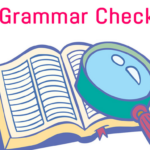Paraphrasing, often hailed as an art in academic writing, is a multifaceted skill that goes beyond substituting words. Its significance lies in the ability to convey information effectively while ensuring originality, thus avoiding the pitfalls of plagiarism. In this comprehensive exploration, we will delve into the nuances of paraphrasing, the evolving landscape of academic writing, and the tools and techniques that writers employ to master this essential craft.
I. Introduction
A. Definition of Paraphrasing
Paraphrasing, at its core, involves rephrasing a given piece of text while retaining its original meaning. It’s not about replacing words with synonyms but rather about expressing the same idea in a new, unique way.
B. Importance in Academic Writing
In the academic realm, where the pursuit of knowledge is synonymous with original thought, paraphrasing becomes a cornerstone. It allows writers to present information in their own voice, demonstrating a profound understanding of the subject matter.
II. Why Paraphrasing Matters
A. Avoiding Plagiarism
Plagiarism, the academic cardinal sin, is effectively circumvented through adept paraphrasing. By expressing ideas in a new light, writers not only sidestep the perils of copying but also contribute to the academic dialogue.
B. Demonstrating Understanding
Paraphrasing is not a mechanical task; it’s an intellectual exercise. It reflects a writer’s comprehension of the material, proving they don’t just reproduce but can reinterpret and articulate concepts in their unique style.
C. Enhancing Writing Skills
More than a tool for avoiding plagiarism, paraphrasing is a catalyst for developing robust writing skills. It nurtures creativity, encouraging writers to find diverse ways of expressing ideas and refining their unique voice.
III. Techniques for Effective Paraphrasing
A. Rewording and Restructuring
Successful paraphrasing involves more than a mere word swap. It requires the restructuring of sentences to maintain coherence and flow, ensuring the essence of the original is preserved.
B. Changing Sentence Structure
Alterations in sentence structure can significantly contribute to effective paraphrasing. This includes transforming passive voice into active voice and vice versa, injecting freshness into the content.
C. Using Synonyms
The careful selection of synonyms is an art. It not only helps in avoiding monotony but also demands a nuanced understanding of language, ensuring the accurate conveyance of ideas.
IV. Common Challenges in Paraphrasing
A. Maintaining Original Meaning
One of the central challenges writers face is preserving the original meaning while rephrasing. Striking the right balance between fidelity to the source and originality is crucial.
B. Striking a Balance Between Originality and Clarity
While pursuing originality, writers must ensure that their paraphrased content remains clear and easily understandable to the target audience. A delicate equilibrium is to be maintained.
C. Avoiding Unintentional Plagiarism
Unintentional plagiarism can sneak in when a writer inadvertently mirrors the structure or wording of the source material. Diligent vigilance is necessary to prevent this pitfall.
V. Tools and Resources for Paraphrasing
A. Online Paraphrasing Tools
The digital age has ushered in a plethora of online paraphrasing tools. While convenient, writers should exercise caution as some tools might inadvertently alter the intended meaning.
B. Reference Materials
Traditional reference materials such as dictionaries and thesauruses remain invaluable. They not only provide synonyms but also deepen the writer’s understanding of the subject matter.
C. Seeking Guidance from Mentors
The human touch cannot be underestimated. Seeking feedback from mentors or professors offers valuable insights and fosters improvement in paraphrasing skills.
VI. Best Practices for Paraphrasing
A. Understanding the Context
Effective paraphrasing necessitates a deep understanding of the context in which the information is presented. This contextual awareness ensures accurate representation.
B. Citing Sources Correctly
Proper citation is the backbone of academic integrity. Writers must be adept at citing sources using the prescribed academic style, be it APA, MLA, or Chicago.
C. Checking for Unintended Similarities
Thoroughly reviewing paraphrased content against the source material helps identify unintended similarities and ensures the content’s originality.
VII. Paraphrasing in Different Academic Disciplines
A. Humanities and Social Sciences
In disciplines where nuance is paramount, paraphrasing involves interpreting and conveying complex ideas with clarity and precision.
B. Sciences and Engineering
Scientific writing demands clarity without compromising accuracy. Paraphrasing is instrumental in explaining intricate concepts to a diverse audience.
C. Business and Professional Writing
In the realms of business and professional writing, effective paraphrasing is essential. It ensures information is conveyed concisely and persuasively, catering to diverse audiences.
VIII. The Future of Paraphrasing
A. Evolving Tools and Technologies
Advancements in technology, including AI-driven paraphrasing tools, are reshaping the landscape of academic writing. The ease and efficiency these tools provide raise questions about the future balance between human creativity and machine precision.
B. The Impact of Artificial Intelligence
AI is poised to play a substantial role in aiding writers with paraphrasing tasks. As technology evolves, the delicate interplay between human intuition and machine efficiency comes to the forefront.
C. Continuous Adaptation in Academic Writing
The future demands adaptability. Writers must embrace new methods while upholding the principles of academic integrity. The ability to navigate the evolving landscape of writing tools is becoming a skill in itself.
IX. Tips for Improving Paraphrasing Skills
A. Practice Regularly
Consistent practice is the bedrock of mastering paraphrasing. Engaging in regular exercises refines skills and hones the ability to present ideas uniquely.
B. Receive Feedback
Seeking feedback from peers, mentors, or writing groups offers diverse perspectives. Constructive criticism is instrumental in identifying areas for improvement.
C. Stay Updated on Writing Conventions
The world of academia is dynamic. Staying abreast of changes in writing conventions and academic styles ensures that writers produce work aligned with current standards.
X. Real-life Examples of Effective Paraphrasing
A. Published Academic Works
Exploring renowned academic works unveils how successful writers adeptly paraphrase complex concepts for a broader audience.
B. Student Papers
Examples from student papers illustrate the growth and application of paraphrasing skills in real academic settings.
C. Notable Quotes
The art of paraphrasing is evident even in the distillation of famous quotes, where profound ideas are rephrased to fit a unique voice.
XI. Conclusion
A. Recap of the Importance of Paraphrasing
In conclusion, paraphrasing is not merely a technical skill; it is a fundamental aspect of academic integrity. It empowers writers to contribute authentically to scholarly discourse.
B. Encouragement for Continuous Improvement
Writers are encouraged not to view paraphrasing as a checkbox but as a continuous learning process. Embracing challenges and seeking opportunities for improvement are essential for growth in this vital skill.
FAQs
Is paraphrasing the same as summarizing?
No, while both involve rephrasing content, paraphrasing retains the original meaning in more detail than summarizing.
Are there any limitations to online paraphrasing tools?
Yes, these tools may not always capture the nuanced meaning of the original text and can sometimes produce inaccurate results.
How can I avoid unintentional plagiarism when paraphrasing?
Careful citation and thorough review of your paraphrased content against the source material are crucial to avoid unintentional plagiarism.
What role does paraphrasing play in professional writing?
Paraphrasing is essential in professional writing to convey information clearly and persuasively, adapting to different audiences.
Can paraphrasing be overdone in academic writing?
Yes, excessive paraphrasing without proper citation can lead to a lack of originality. Striking a balance is key.








